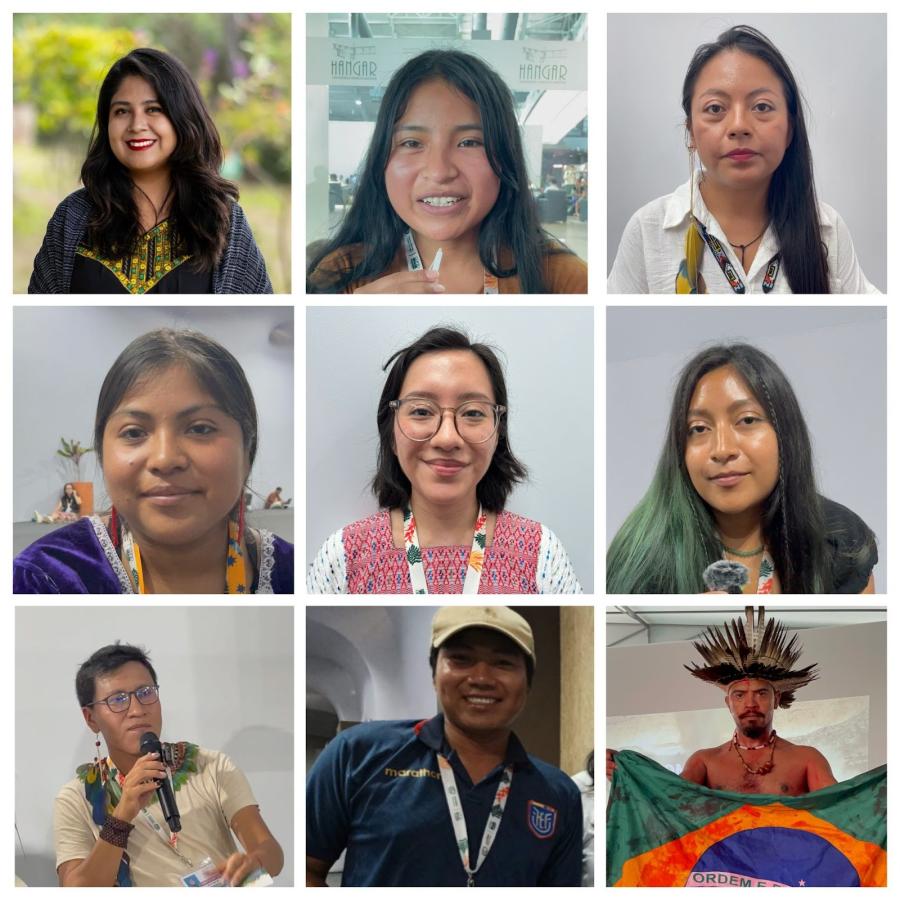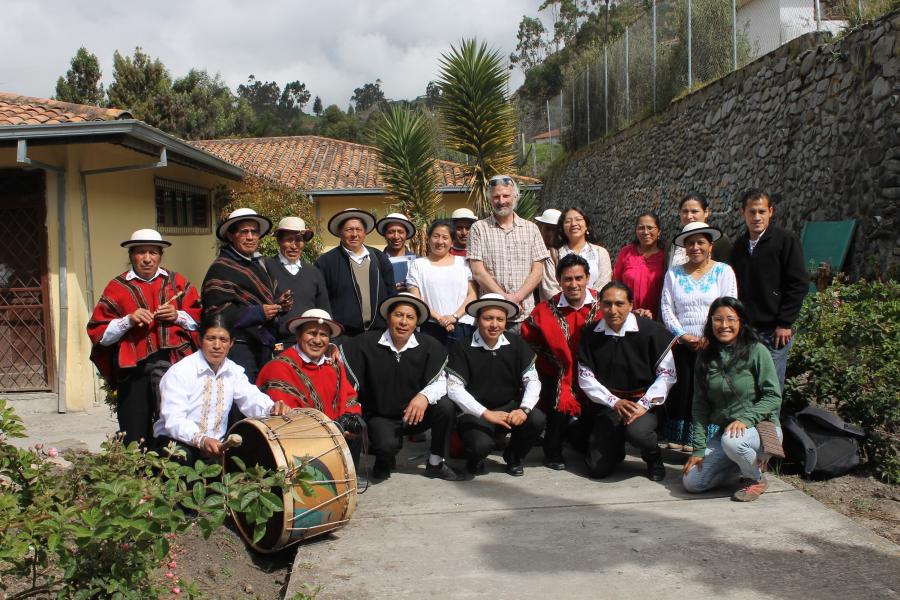Whether it's the Maasai of East Africa, the M...ori of New Zealand or the Quechua of the Andes, indigenous and local communities simply do not see the world in the same way that your average scientist, corporate executive, or urban resident does. Many of the differences between the worldviews of indigenous and local communities and those of the rest of the world can be traced back to the writings of Enlightenment philosophers such as René Descartes. Descartes provided a clear iteration of an idea that had been developing for centuries: the concept of mind over matter. Humankind is separated from the rest of nature in what has come to be the globally dominant philosophical paradigm.
This Cartesian division between humankind and nature has had profound implications for relations among the multiplicity of human cultures and communities. The rise of `technocentricity' (or `dominator culture') -- an extremist sort of Cartesian philosophy where a premium is placed on activities that increase the distance between humankind and nature -- has resulted in a commensurate devaluation of activities that are closely connected with nature. In this Northern paradigm, knowledge and technology are things -- objects which can be valued and traded. To allow for this valuing and trading, knowledge and technology must be regarded as property, and orthodox intellectual property rights are the rules for the ownership of this property. In the last fifty to one hundred years, Northern cultures have undergone unprecedented transformations, many of which have been characterized by cultural erosion and homogenization. Societal change in Northern cultures, however, has been internal; the development of the system of intellectual property rights grew out of and respects its heritage. Traditional communities, in contrast, see knowledge and technology as integral parts of their existence. The distinctions between the material and abstract are blurred for many communities and frequently no distinction is made between knowledge and the natural resource associated with it. For most traditional herbalists, knowledge and herbs are one and the same thing.
In a society where the abstract and tangible are indivisible, the Northern concept of property -- based on scarcity -- is alien. Many traditional philosophies are instead based on theories of abundance. Abundancia (a concept found in many South American indigenous communities), for example, involves the idea that the environment will provide for all needs. Such a concept makes individual property, long-term planning, or other related ideas meaningless. This is not to say that the idea of property does not exist at all; communities will often fiercely defend their territories from encroachment. Many traditional property theories consequently have strong communal elements; property is usually controlled by a definable group that cuts across different societal sectors. In traditional societies property is often about custodianship rather than ownership. Rights of use associated with this custodianship entail obligations. Failure to fulfill these obligations can lead to the loss of custodianship and a commensurate loss of access to the knowledge or resources concerned. In several recent cases, Australian courts have begun to accommodate this idea by recognizing that the work of an Aboriginal artist involves an implicit obligation to his or her wider community.
One should not fall into the trap, however, of oversimplifying traditional worldviews as they relate to property, and particularly to the idea of property in knowledge. The Maasai of East Africa, for example, designate three key groups as guardians of medical knowledge. A substantial body of knowledge, including many of the most commonly used remedies, is held communally. The Loiban -- the closest approximation in Maasai culture to the stereotypical shaman -- are governed by strict hereditary principles and are the overall guardians of Maasai culture, including the medicinal and environmental. Herbalists, on the other hand, constitute a relatively small group and hold a considerable amount of specialized knowledge that can be adapted to treat a wide variety of symptoms. Among the Maasai, herbalists operate along lines similar to a guild system. No governing hereditary principle applies; young Maasai expressing an appropriate interest in herbal medicine may receive training upon payment of a token fee, usually one heifer. Traditional knowledge systems rarely lend themselves to simple explanation.
A society's knowledge, and its system for generating and maintaining that knowledge, are cornerstones of its culture. Legal systems -- whether codified or customary -- dealing with the use and protection of knowledge thus involve fundamental human rights that are explicitly recognized in the Universal Declaration of Human Rights. The 52(nd) session of the United Nations Sub-Commission for the Protection and Promotion of Human Rights recently emphasized the primacy of human rights obligations over economic policies and agreements such as intellectual property rights. Discussions involving orthodox intellectual property rights and the knowledge of indigenous and local communities are of critical significance to these communities: Northerners may debate the relative valuation of rights in material things, while for indigenous and local communities these discussions often involve the very meaning of life.
Since the development of the United Nations Universal Declaration of Human Rights in 1948, the legal standing of indigenous and local community knowledge has in many ways been dependent on the position of indigenous and local communities within nation-states. The issue has come to the forefront of international debate in recent years due to a series of international agreements and scientific advances which have fundamentally altered the intellectual property and human rights landscapes. The United Nations International Labor Organization's Convention 169 concerning Indigenous and Tribal Peoples in Independent Countries (ILO 169) was one of the first international agreements to recognize explicitly the fundamental relationship between indigenous peoples and their knowledge. Because of its perceived implications for the sovereignty of nation-states, however, this progressive agreement found little support outside of Latin America. The UN Convention on Biological Diversity (CBD) took a more limited, less politically charged approach to indigenous and local community knowledge by focusing on the relationship between knowledge and the environment. Signed by 177 Member States, the CBD is one of the most widely adopted international agreements in history and has proved to be a relatively effective forum for indigenous and local communities to seek recognition of their rights.
The greatest impact on concerns over indigenous and local communities' rights, however, came from the mercurial rise of biotechnology on the international trade stage and the 1995 WTO Agreement on Trade Related Aspects of Intellectual Property Rights (TRIPs). These two factors have simultaneously created a large potential market for the knowledge and resources of indigenous and local communities and raised significant fears over risk that these resources will be misappropriated. As a consequence, indigenous and local knowledge is receiving increasing international attention, both on the basis of its relationship to self-determination and human rights, and on the basis of its relevance to modern science. Recent high profile cases involving ayahuasca from South America (see Rachel Proctor's article in this issue), turmeric from India, and the soapberry from Africa, for example, have only served to demonstrate this international interest and a corresponding inability to manage it effectively. The situation has created often opposing pressures calling for greater recognition of the rights and needs of indigenous and local peoples on the one hand and further exploitation of their knowledge, practices and innovations on the other. The current interest in the protection and promotion of indigenous and local knowledge reflects these opposing interests and encourages some form of compromise where indigenous and local communities have the power to control their own destiny through a defense of cultural integrity. Indigenous and local peoples should be assured entry into the modern economic sphere in the security of respect for their human rights: social, cultural, and economic.
Efforts to use the orthodox intellectual property system to achieve this compromise have thus far failed. Their common theme has always been an attempt to bend and twist the tools of orthodox intellectual property (and in some cases the nature of indigenous and local community knowledge) to fit the particular needs at hand. Orthodox tools such as trade secrets, geographical indications, and trademarks no doubt have some potential in certain situations but none of these mechanisms offer a satisfactory comprehensive solution.
The orthodox intellectual property system is not capable of protecting the rights of indigenous and local communities. Traditional peoples are vulnerable to the exploitation of their knowledge in flagrant violation of their inherent human rights. The recognition of these rights, and their consequent enforcement, is one of the most complex issues currently being addressed by a number of international fora and national governments. The principle that indigenous and local communities are entitled to enforceable rights over their knowledge is nearly universally accepted. The fact that the modern intellectual property system is too expensive and too removed from the interests and concerns of indigenous and local communities to adequately protect their interests is almost as equally accepted. The stumbling block has been the effective iteration of indigenous and local community rights at either the national or international level.
The key missing deficiencies of the orthodox intellectual property system are relatively easy to identify. A suitable international forum to oversee whatever rights are developed is needed. Existing trade, environmental and even intellectual property fora are sectoral and it is difficult to see how they could cope with the multidisciplinary, unified nature of indigenous and local community knowledge. The recent creation of a United Nations forum specifically dedicated to the interests and concerns of indigenous populations is encouraging, but is unlikely to outweigh the interests of other fora, particularly the World Trade Organization. The biggest problem with orthodox rights is their focus on the material aspects of knowledge at the expense of the cultural. New rights protecting the knowledge of indigenous and local communities must be localized, relevant, pertinent, and effective. Ever since the creation of patents in fifteenth century Venice, the nature of such new rights has been defined by, or at least in consultation with, the supposed beneficiaries. Why have we suddenly abandoned this principle in the case of indigenous and local communities?
(1). Behrend, H. (1995). The Holy Spirit Movement & the Forces of Nature in the North of Uganda, 1985-1987. In Hansen, H.B. & Twaddle, M. eds., Religion and Politics in East Africa. James Currey Ltd, p.68.
Article copyright Cultural Survival, Inc.



